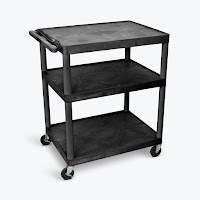Buying Guide: Electric Baseboard Heaters
One of the most common types of heating solutions, an electric baseboard heater is a perfect option for heating bedrooms, living spaces, and other small rooms. It’s quiet and safe to operate, energy-efficient, and easy to install. And unlike fan heaters, it doesn’t blast air, along with dust and other allergens. So it’s unsurprising that homes across the country use this as a supplementary heating system.
If you’re planning to buy a baseboard heater, you’re in the right place. You can check out this list of the best baseboard heaters or read on and find out the factors you need to consider when choosing a baseboard heater.
A hydronic baseboard heater consists of two main components, namely a heating element and an internal reservoir. Its heating element warms the oil- or water-filled reservoir, which then heats the air.
What’s great about hydronic baseboards is that they’re more energy-saving than convection heaters. Because they make use of fluid-filled reservoirs, they produce longer-lasting heat, even after they’re turned off.
Another popular baseboard heating option is an electric convection baseboard, which transfers heat via convection. It takes in the cold ambient air, warms it using its heating element, and allows the heated air to rise and spread throughout the room.
While it’s less energy-efficient than hydronic baseboards, a convection baseboard heater is easier to install and maintain. It doesn’t have ducts to clean or reservoirs that can leak. Plus, it produces quicker heat than hydronic baseboards.
Standalone baseboard heaters can be installed on the wall, and they require some hardwiring. You can also find portable baseboard heaters, which you can use straight out of the box.
But if you have a central heating system in place, you might want to consider the more affordable option of installing an appropriate hydronic baseboard heater. This may require the help of a professional, so you have to factor in the cost of hiring one.
But if you want to place the baseboard heater someplace else, make sure that it’s not facing a fully opened door. Placing the heater in front of an open door can prevent it from generating heat efficiently.
If you’re planning to buy a baseboard heater, you’re in the right place. You can check out this list of the best baseboard heaters or read on and find out the factors you need to consider when choosing a baseboard heater.
Hydronic vs Convection
There are two main types of electric baseboard heaters: hydronic and convection.A hydronic baseboard heater consists of two main components, namely a heating element and an internal reservoir. Its heating element warms the oil- or water-filled reservoir, which then heats the air.
What’s great about hydronic baseboards is that they’re more energy-saving than convection heaters. Because they make use of fluid-filled reservoirs, they produce longer-lasting heat, even after they’re turned off.
Another popular baseboard heating option is an electric convection baseboard, which transfers heat via convection. It takes in the cold ambient air, warms it using its heating element, and allows the heated air to rise and spread throughout the room.
While it’s less energy-efficient than hydronic baseboards, a convection baseboard heater is easier to install and maintain. It doesn’t have ducts to clean or reservoirs that can leak. Plus, it produces quicker heat than hydronic baseboards.
Installation
If you’re planning to buy a baseboard heater, you have the option to get a standalone system or one that you can integrate into your existing central heating system.Standalone baseboard heaters can be installed on the wall, and they require some hardwiring. You can also find portable baseboard heaters, which you can use straight out of the box.
But if you have a central heating system in place, you might want to consider the more affordable option of installing an appropriate hydronic baseboard heater. This may require the help of a professional, so you have to factor in the cost of hiring one.
Location
Before you get a baseboard heater, keep in mind that it has to be installed under the window to work optimally. It also needs to have a safety clearance 12 inches above, 6 inches on the side, and about an inch between the unit and the floor.But if you want to place the baseboard heater someplace else, make sure that it’s not facing a fully opened door. Placing the heater in front of an open door can prevent it from generating heat efficiently.
Safety Considerations
As with all kinds of heating systems, you have to understand how to safely operate an electric baseboard heater. That way, you’ll know if a baseboard is the ideal heating option for your room layout and preferences.- Don’t put the unit under a wall outlet.
- Don’t place it directly on the floor.
- Keep it at least 3 feet away from flammable materials.
- Keep the heater away from pets and children.
- Don’t install the thermostat right above the heater. Instead, mount it on the front of the heater or on the wall.
- Don’t plug the heater into an extension cord. Plug it directly into the wall outlet. Make sure that the baseboard heater has a thermal cutoff feature.

Comments
Post a Comment